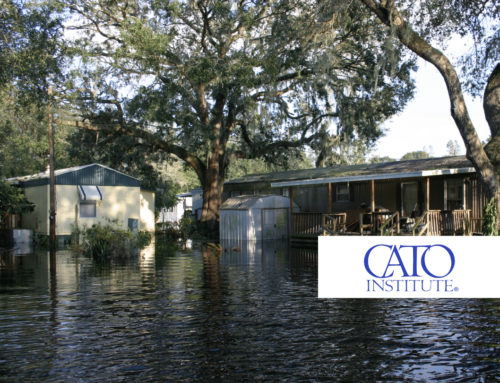View/Download this article in PDF format.
After 23 extensions, Congress is finally on the verge of reauthorizing the nation’s air program for the next four years. This would be the first time the program was fully authorized since Sept. 30, 2007. One of the issues Taxpayers for Common Sense (TCS) has been following most closely is the Essential Air Service (EAS), a wasteful and outdated program that we have argued should be eliminated in the lower 48 states.
Though the program appears to be cut by the agreement reached by the conference committee, there is much more here than meets the eye. Specifically, much more MONEY for the EAS program than meets the eye.
Here’s the lowdown:
Funding levels as described by the conference agreement:
| (in millions) | FY12 | FY13 | FY14 | FY15 | Total |
| Discretionary | $143 | $118 | $107 | $93 | $461 |
| Mandatory (overflight fees | $50 | $50 | $50 | $50 | $200 |
| Total | $193 | $168 | $157 | $143 | $661 |
| Source: Conference Committee |
This would appear to be a cut of approximately $111M when compared to extrapolating FY11 funding levels over four years ($661M in the conference agreement vs. $772M if FY11’s $193M is extrapolated). Note that this is actually a generous assumption on our part, since the Senate bill called for an even higher funding level ($200M per year).
Clear away the smoke and mirrors, however, and it’s not a cut. It’s an increase.
Here’s why:
The conference agreement stipulates that revenue collected from overflight fees (fees charged to passengers of airplanes that fly through US airspace but do not actually land in the US) is immediately available for use in the EAS program. Under existing law, Congress authorized $50M of overflight fee revenue to be spent on the EAS each year, and that’s all the FAA was allowed to spend. Anything they collected in excess of $50M would be available for future years, since in any year they collected less than $50M, they would have to make up for that out of program funds. This allowed a buffer. And it also worked because the amount collected in overflight fees was generally close to $50M each year (FY11: $56.7M).
But here’s where the increase comes: A recent FAA rulemaking increased the amount the US is going to charge in overflight fees over the next several years DRAMATICALLY. There will be three increases in the overflight fee between now and October 1, 2014 (there was an increase on October 1, 2011 as well).
The result:
| Total projected overflight fee collections (FY12-FY15) | $355,201,286 |
| Amount of overflight fee that would otherwise have been committed to EAS | $200,000,000 |
| Net additional funding available to EAS from increase in overflight fees | $155,201,286 |
| Source: Federal Register |
That’s right, over the four year period where Congress looks like it’s CUTTING $111M in EAS funds, it is allowing for an additional $155M in funding from overflight fees.
In other words, over the next four years, Congress’ “cut” in EAS funding will actually ADD up to $44M to one of the most wasteful programs imaginable.
—
A couple of other changes from the conference version and what they mean for the EAS program:
1. Fails to sunset the program as the House bill directed.
2. Rolls back the very, very modest reform that eliminated subsidies for airports within 90 miles of a hub that was in the August extension agreement.
The House bill would have brought the program to an end in all but Alaska and Hawaii as of October 1, 2013. The Senate bill did not, but did propose to require that airports must have 10 enplanements per day (unless the airport is 175 miles or more from a hub) and be at least 70 miles from a medium or large hub airport to quality for EAS subsidies. This latter reform is a reversal of a provision originally adopted in the hard fought August extension, which changed it to 90 miles. That extension was only agreed to after shutting down the program for several days, costing taxpayers $350 million in lost tax revenue.
The final agreement between the House and Senate leaned heavily toward the Senate language, but unfortunately took away the (very, very) modest reform to the program enacted earlier, and restores the 70-mile requirement.
Read more: Essentially Wasteful: The Essential Air Service (TCS analysis of earlier extension bill)
3. Freezes the list of eligible airports
Instead of sunsetting the program, the final agreement instead freezes the program so that only communities that are currently participating will be eligible for future subsidies (again, this does not apply in Hawaii and Alaska). Under this section, program eligibility is limited to communities that either: a) received EAS subsidies during FY2011 (that’s 106 communities by our count); or b) received notice from their previously unsubsidized carrier the carrier’s intent to terminate such service (we’re working to calculate how many airports this could impact).
This may be a positive step, but we are not so sure. While we are pleased that the program can’t be expanded beyond a now far more limited list of eligible communities, the conferees have drawn a highly arbitrary line. There is no indication or agreement that the communities’ currently receiving subsidies is indeed the “right” list.











Get Social